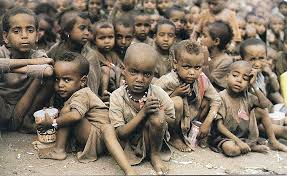Five months into 2017, there is still no budget or funding for 2.5 million Severely Acute Malnourished (SAM) children in the country. And like in previous years, about 500,000 of them risk death before year end according to a recent report by the United Nations Children’s Fund (UNICEF).
At the moment, the 2017 Appropriation Bill is yet to be passed by the National Assembly hence, there is no allocation to tackle malnutrition in the Federal Ministry of Health’s budget.
Investigations by The Guardian revealed that even previous year’s budget was not adequate to cater for millions of malnourished children in the country.
He said: “For instance, in 2014, when a budget line for child nutrition was created for the first time in Nigeria, N30m was allocated, but nothing was released. In 2015, nothing was budgeted for child nutrition. In 2016, N2.4m was appropriately budgeted for scaling up child nutrition, but the little amount was not released and no one is sure what 2017 would look like.”
For Nigeria to end child malnutrition within the shortest possible time and save lives of 2.5m children annually, Isokpunwu said government has to source for, and provide the sum of N912m for the next five years.
“About half a million Nigerian children below five years of age die yearly due to malnutrition, making the country one of the highest contributors to deaths of children below five in the world. The rest that survive often become stunted for life,” he lamented.
According to UNICEF Nutrition Specialist, Zakaria Fusheini, investing in nutrition will yield valuable returns for the country.
“For every N1, 000 invested in stunting reduction, a country will get N16, 000 return. Nigeria loses over $1.5b in GDP annually to vitamin and mineral deficiencies, according to the World Bank. The evidence is abundantly clear that the ties between nutrition and economic prosperity run deep, and the world, Nigeria inclusive, cannot afford to wait to increase investments in this area,” he said.
While countries such as Peru and Senegal have made progress in tackling malnutrition, Fusheini, noted that Nigerian government is still not convinced malnutrition is a problem, hence the poor funding.
In order to avert more deaths from severe acute malnutrition, he said the Nigerian government needs to invest more in SAM intervention services, such as the Community-based Management of Acute Malnutrition (CMAM).
“The major cost of the programme is the Ready-to-use Therapeutic Food (RUTF) for the treatment. It costs UNICEF an estimated US$61 per child reached to procure and distribute the RUTF. This has been made possible, thanks to CIFF, DFID and USAID. More children are in dire need of treatment. To treat more children, and sustain the life-saving programme, federal and state governments need to contribute more in the procurement of the RUTF,” he said.
According to him, some states have been able to release money to tackle malnutrition.
“Kaduna State government released N300m for nutrition, Gombe State released N17m, Bauchi State N17m and Sokoto State N50m. This is commendable, but more states need to follow suit,” he said.
UNICEF Nutrition Specialist Enugu, Ngozi Onuora, noted that simple interventions can save malnourished children’s lives, but government has to be committed.
She said: “It is so sad that many state governments are no longer implementing Maternal, Newborn and Child-health Week (MNCHW), hence the poor commitment to supporting mothers in practising good nutrition at household levels. Every single day, Nigeria loses about 2,300 under-five-year-olds and 145 women of child-bearing age as a result of malnutrition, making it the second largest contributor to deaths from malnutrition in the world after India.”
Statistics provided at the media dialogue by nutrition experts showed that malnutrition, though a national problem, is much worse in the North. The statistics showed that the total number of children affected by malnutrition in the South East in 2016 was 34, 889, while 6, 700 deaths were recorded. In the South South, 86, 304 children were affected, out of which 16, 700 died, while the South West had 84, 417 cases and 16, 300 deaths; North West had 1, 594, 462 cases and 308, 000 deaths; North Central 43,635 cases with 8, 400 deaths; and North East 695,998 cases and 134, 000 deaths.
According to them, on September 8, 2015, Nigeria adopted the National Strategic Plan of Action on Nutrition (NSPAN 2014-2019). The policy, expected to reduce stunting by 20 per cent, wasting by 15 per cent and increase exclusive breastfeeding by 50 per cent by 2019, is still not funded in mid 2017.





